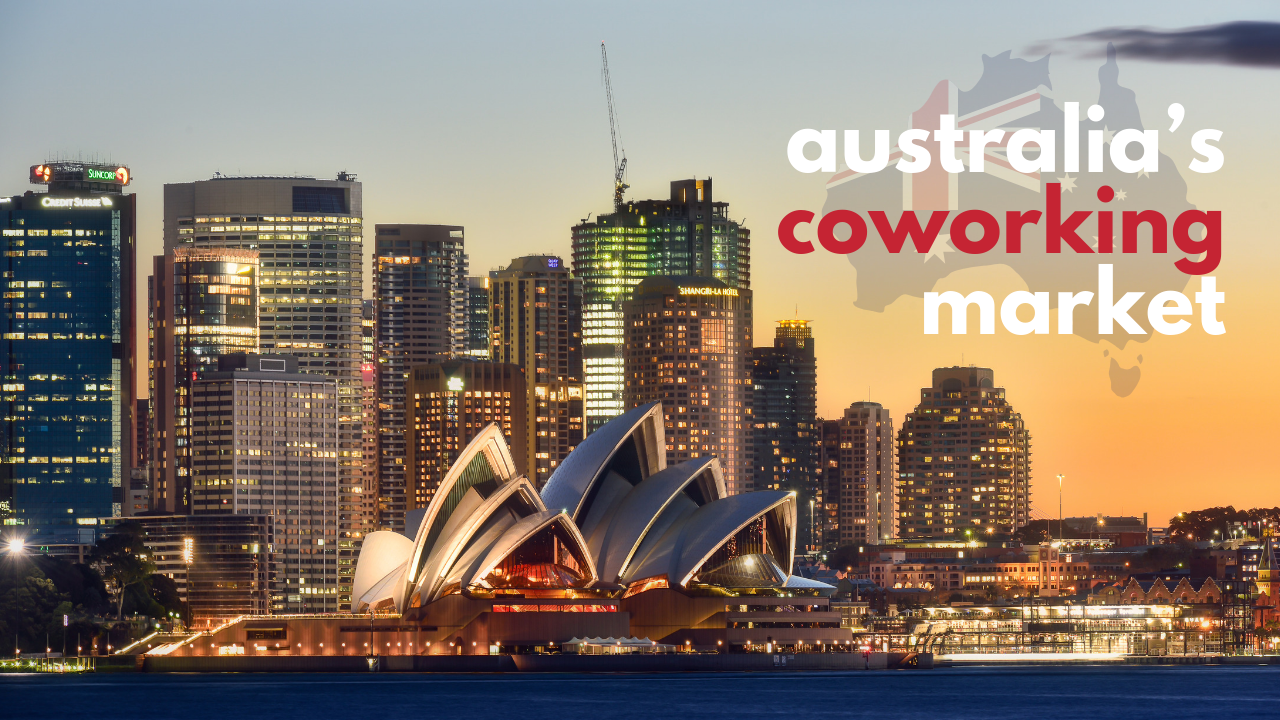- In 2017, coworking grew by 62% in Australia and it accounts for about 0.7% of Australia’s office stock.
- The Australian flexible workspace market is shifting, large companies and corporates are expected to increase their flexible space uptake.
- Research suggests the flexible workspace market will soak up around 12% of all commercial office stock by 2030.
Australia’s flexible workspace market has been growing steadily for some time. Between 2013-2017 the number of coworking spaces in Australia grew by 297% and in 2017 alone, coworking grew by 62% across the nation, introducing more than 50 new spaces.
According to CBRE, the sector currently occupies approximately 193,200 sq metres of space across Australia’s six major capital cities, which accounts for roughly 0.7% of office stock.
However, while the market is clearly growing in response to high demand, numerous resources point to a noticeable shift in the type of occupiers using flexible space.
“Big guns” taking up space
A report released in September 2018 by Office Hub, an Australian flexible workspace brokerage, revealed stark changes in the nature of Australia’s coworking market.
“The biggest surprise for us was the trend of bigger and more corporate businesses moving towards flexible workspaces,” said Grant Philipp, CEO and founder at Office Hub, upon release of the research. “Our primary customer base has always been small businesses and startups but this year saw more representation than ever from the big guns like corporates and enterprises.”
Office Hub’s research found a significant 105% lift in inquiries for 15+ people, which suggests more large businesses are considering flexible workspaces as a viable option.
“This will translate into bigger rentals throughout the market in the next year,” added Philipp.
Further findings support this trend.
In October 2018, the CBRE Pacific Corporate Coworking Survey found that 100% of respondents classed as large users of space (with portfolios over 30,000 sqm) intend to increase their use of coworking over the next two years.
This coincides with 52% of corporate firms expecting to reduce their footprint of traditional leased space within the same two-year time frame.
This represents a huge opportunity for flexible space operators — and the market is certainly responding.
Against a backdrop of continued growth in supply, one piece of research claims the Australian flexible workspace market will soak up around 12% of all commercial office stock by 2030. Bear in mind that this prediction comes from research commissioned by IWG Plc, which may be somewhat biased in its approach. Indeed, 12% is a significant leap from CBRE’s current (2018) estimate of 0.7%. But given Australia’s recent spate of growth and its thirst for enterprise clients, it’s easy to see where these lofty predictions are coming from.
All things considered, the Australian flexible workspace market is showing no signs of slowing down.
Yet while enterprise clients are playing their part in boosting coworking growth, they are also influencing big changes in the type and style of coworking offered.
Does coworking have an image problem?
Take a closer look at CBRE’s Pacific Corporate Coworking Survey.
Despite 100% of large corporate occupiers saying they intend to increase their use of coworking space in the next two years, only 32% of respondents in Australia sat they would choose to be in a building with a coworking space provider in situ.
Why?
Part of the problem could be down to the relatively new status of coworking in the Australian market. As a young industry, preconceptions have already been formed and many of them relate to a singular and somewhat blinkered image of coworking.
“Blue-chip corporates are concerned about the profile of the building,” commented Felice Spark, CBRE’s head of office and occupier research, in an interview with Australian Financial Review. “If you’re KPMG, for example, you want to be associated with a CBA, or a similarly blue-chip corporate tenant profile. To have WeWork in the property and half the lift full of people in flannels shirts and thongs — those things can be a bit of a culture shock.”
So while demand for coworking in Australia’s major cities is high, there are certain issues that may be affecting occupiers’ demand for the specific offering they are seeking.
That said, there is an opportunity here for more differentiated and niche service offerings in the coworking space to suit these bespoke industry requirements. Because for every KPMG that may reject casual dress in the workplace, there is a tech or creative giant — think Facebook, Microsoft, or Amazon — that fully embraces the culture.
Damien Sheehan, Australian head of IWG, commented in an interview with Commercial Real Estate (November 2018) that the amount of growth the flexible workspace industry is expecting is “quite enormous” and “in the last 12 months, the number of enterprise discussions we are having with ASX 200 organisations is certainly increasing.”
The opportunities are clear.
As for taking advantage of them, JLL’s Tom Carroll, Head of EMEA Corporate Research, believes that flexible workspace operators have a crucial opportunity to entice corporate firms by shifting their mindset. He advises operators to provide “integrated technology, workplace data analytics and space utilisation improvements” alongside high-quality, amenity-rich workspaces “that go well beyond merely offering bottomless coffee and a desk”.
Occupiers of all sizes value the sense of community and collaboration that comes from coworking spaces, and operators should continue to invest in this culture through “networking events, social and dining areas and creative designs”.
“If flex space or coworking providers can demonstrate sustained evidence of improvements in how companies are getting more from the spaces they lease, and this can be scaled, we will see an acceleration in enterprise adoption,” he added.


 Dr. Gleb Tsipursky – The Office Whisperer
Dr. Gleb Tsipursky – The Office Whisperer Nirit Cohen – WorkFutures
Nirit Cohen – WorkFutures Angela Howard – Culture Expert
Angela Howard – Culture Expert Drew Jones – Design & Innovation
Drew Jones – Design & Innovation Jonathan Price – CRE & Flex Expert
Jonathan Price – CRE & Flex Expert













